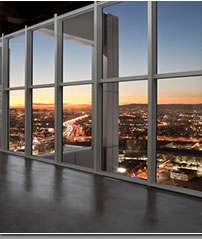Elevators respond differently in different emergencies, but each response is intended to keep elevator occupants out of harms way:
- In a Fire Emergency: Upon activation of an elevator lobby smoke detector or elevator shaft smoke detector, involved elevators will recall to the Lobby Level or to an alternate floor if the alarm is on the Lobby Level. Elevator doors will open and the elevators will automatically shut off.
- In an Earthquake: If the earthquake is large enough, the seismic control in each elevator will cause each elevator to stop momentarily then move up or down to the closest floor - opposite the elevator’s counterweight. Doors will open at that floor and the elevators will remain there until inspected and reactivated by an elevator technician.
- In a Power Failure: Elevators will stop momentarily; the emergency generator will start up and provide power so that one elevator per bank will operate. Each elevator cab has emergency lights and an intercom for two-way communication with the security console. To activate the intercom, depress the button and speak to the security console operator.
- Magnetic Door Holders: Fire doors are located on either side of the elevator lobbies on all floors and are equipped with magnetic door holders. Activation of any building alarm device will release the doors on the floor of activation only. Doors with magnetic door holders will also release in case of a power failure. When the doors close, they do not lock. These fire doors must not be blocked for any reason at any time.





